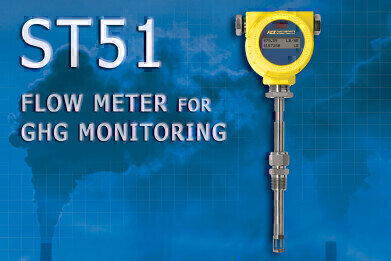Air Clean Up
Greenhouse Gas (GHG) Flow Meter For Process & Plant Flue Gas Applications
Oct 13 2010
Process and plant engineers in a wide range of industries who are concerned about the US EPA’s greenhouse gas (GHG) monitoring requirements, will find the ST51 Mass Flow Meter from Fluid Components International (FCI) provides the high performance and features required of these applications in an instrument that is easy-to-install, safe and requires virtually no-maintenance to deliver a best cost solution.
The ST51 Flow Meter is ideal for the measurement and monitoring of industrial plant greenhouse gases. The ST51 features a no-moving parts design that’s non-clogging and operates over a wide flow range with low-flow sensitivity. It’s packaged in an explosion-proof transmitter, and the calibration is matched to the user’s actual gas composition and installation conditions.
For years, industrial process and manufacturing plants have been required by the EPA, state and local authorities to monitor flue or stack emissions with flow meters in the fight against air pollution. Flue gases are the general name given to the mixed composition hydrocarbon greenhouse gases that are the by-product of an industrial plant combustion process. A flue is typically a large pipe, duct, stack, chimney or other venting attached to a process or industrial manufacturing plant system such as a boiler, furnace, steam generator, oven, etc., through which waste gases are exhausted from the combustion process.
Flue gases are produced by many industries, including chemical and food processing, petroleum refining, pharmaceutical production, metals and advanced materials, paper plants, electric power generation plants and others. Depending on the type of plant, processes, fuel used and efficiency, flue gases include: nitrogen, carbon dioxide, oxygen and water vapor, sulfur oxides, nitrogen oxide, carbon monoxide, particulates, ozone and methane. These gases in our atmosphere absorb and emit radiation within the thermal infrared range, which has been identified as the primary cause of global warming.
Events
May 05 2024 Seville, Spain
May 13 2024 Munich, Germany
May 23 2024 Beijing, China
May 23 2024 Beijing, China
Jun 10 2024 Algiers, Algeria














